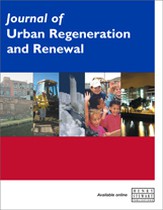Combining urban strategies for resilience and liveability: Three emblematic case studies
Abstract
The concepts of resilience and adaptation are becoming increasingly relevant in urban planning, particularly in cities where climate change poses significant threats. These concepts should be linked to health and liveability to both turn risks into opportunities and safeguard the environment while improving the quality of life for citizens. This study explores the strategies implemented in a city like New York, which has embraced this ‘holistic’ approach over the past decade to enhance resilience while improving liveability, particularly through public space development. New York’s public spaces, including waterfronts, elevated parks and multifunctional urban parks, are key elements in addressing environmental challenges such as sea-level rise, storm surges and the urban heat island effect. The revitalisation of Hudson River Park demonstrates how urban green spaces can integrate natural flood defences and support biodiversity while remaining functional and accessible. The High Line, an elevated park, showcases the potential for reusing industrial infrastructure to create adaptive, vibrant public spaces, though it faces challenges such as overcrowding and heat exposure. Bryant Park, located in Midtown Manhattan, provides insights into managing smaller urban parks that accommodate diverse uses and heavy foot traffic while mitigating the effects of heat and overcrowding. This paper presents three case studies, which were analysed using an original methodology specifically ideated to identifying the effects of concurrent risks, people’s perceptions and possible projects or policies to improve urban adaptation and liveability.
The full article is available to subscribers to the journal.
Author's Biography
Marichela Sepe is an Associate Professor of Urban Planning at DICEA at the Sapienza University of Rome, and a member of the Academic Board of the PhD Programme in Architecture and Urban Engineering. She has been a Visiting Professor in 2013 at Peking University, and in 2024 at Gdańsk University of Technology. Her research interests include sustainable urban design, place identity, healthy cities, liveable public spaces, creative urban regeneration and multi-adaptation planning. She has published numerous articles on these topics in national and international journals, books and book chapters and presented at conferences.
